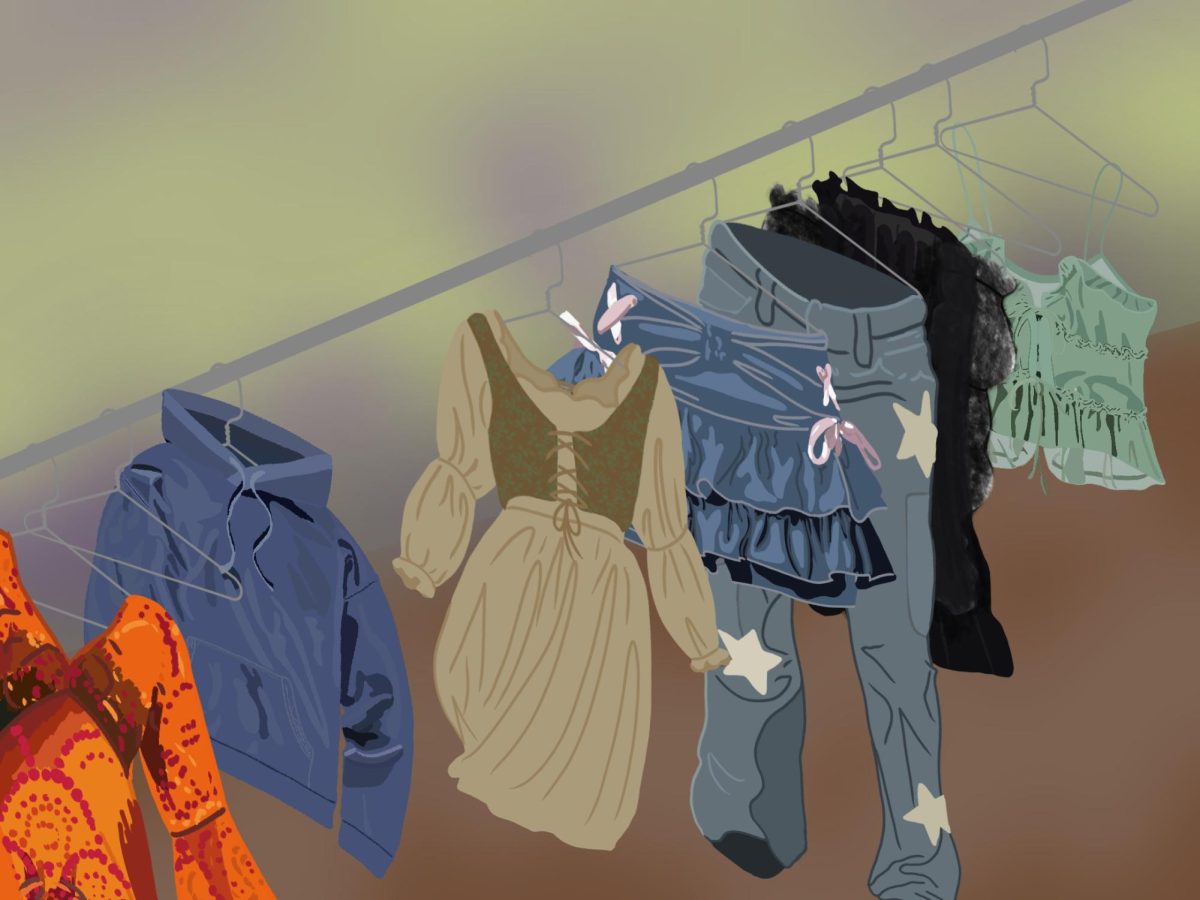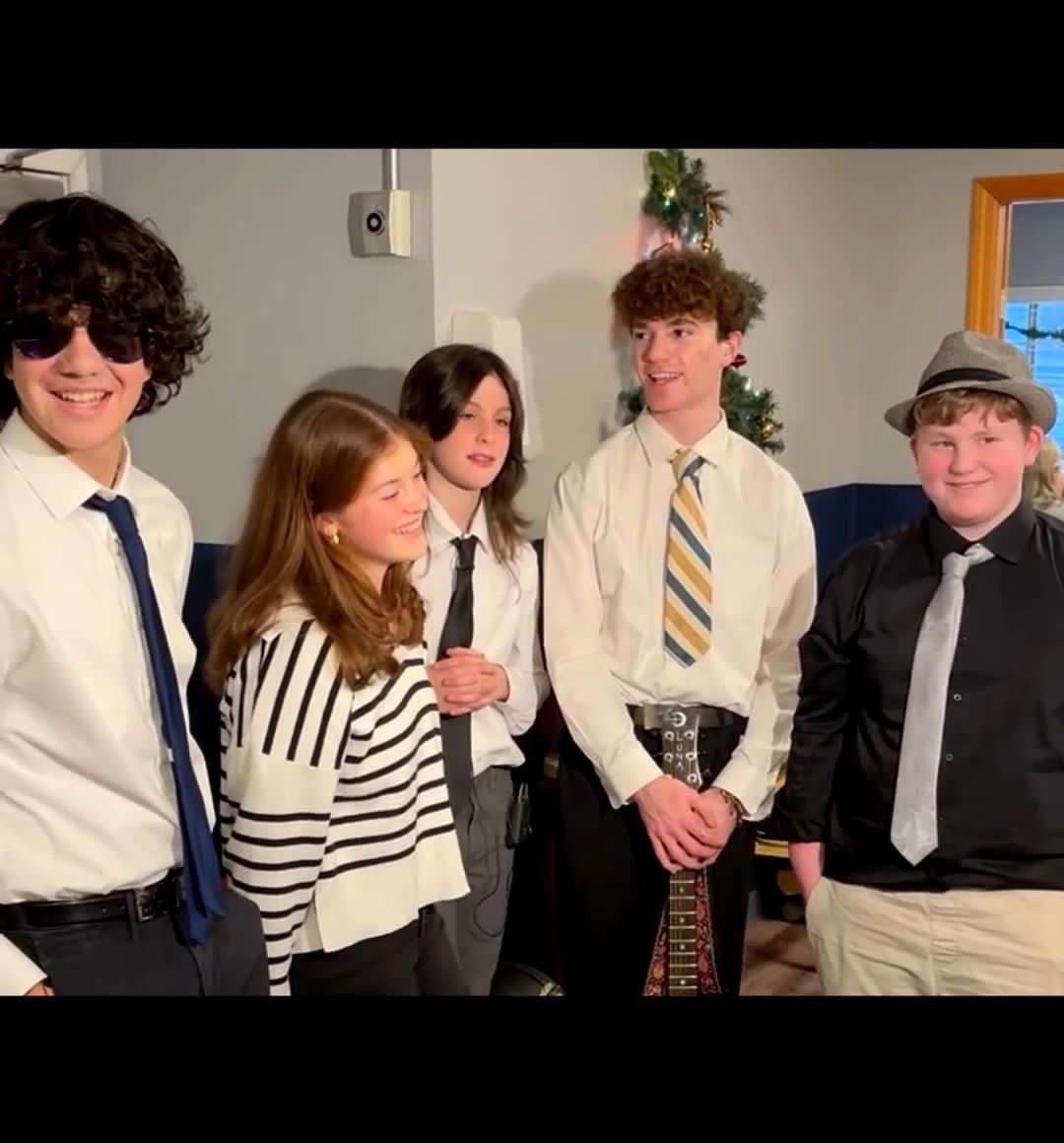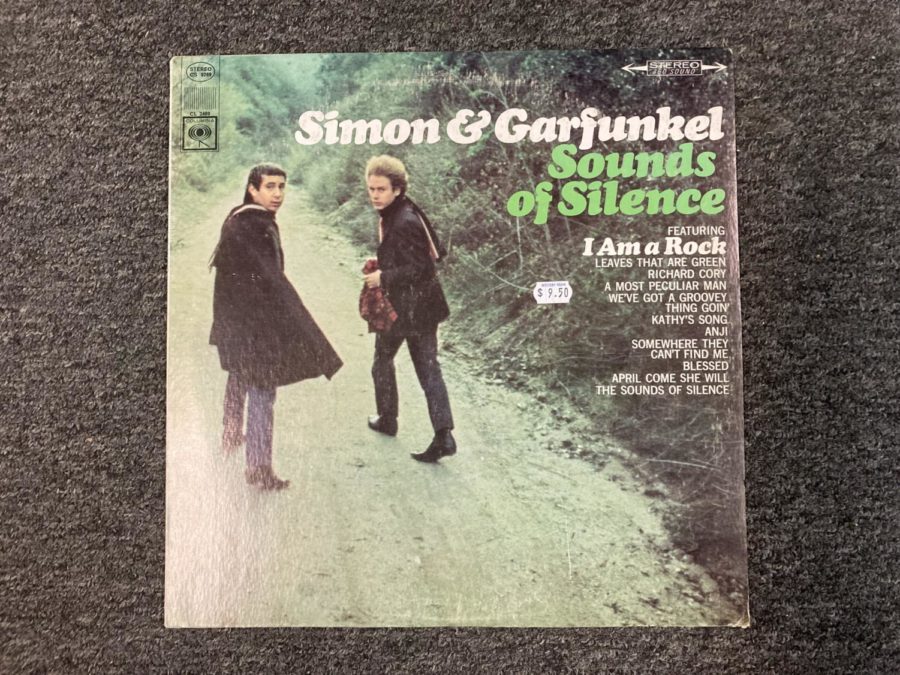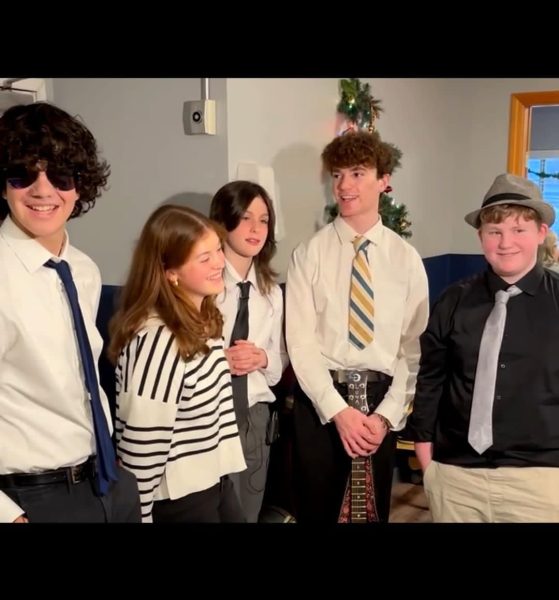Old School Album Review: Sounds of Silence
Aurelia Harrison’s personal copy of “Sounds of Silence” on vinyl.
The 60s and 70s were a golden age for folk and rock music. Live concerts were taking the nation by storm, radio stations and record labels were rising to power, and there to meet them was an unsuspecting folk-rock duo, who would one day rule the airwaves: Simon and Garfunkel.
The duo’s discography has remained near and dear to the hearts of many, and has inspired films like “The Graduate” (1967), whose soundtrack was almost entirely Simon and Garfunkel’s music. Though almost all of their albums are certified classics, the album that rocketed them to stardom takes the old school spotlight today: “Sounds of Silence” (1966).
Paul Simon and Art Garfunkel met when they were children, growing up neighbors in Queens, New York. As the story goes, Simon took notice of Garfunkel after hearing him sing in the fourth-grade talent show, a meeting that would be eerily reminiscent of their artistic relationship.
Simon and Garfunkel were a duo as musically harmonious as they were personally unharmonious. Their collaborative musicianship has earned them the title as one of the best folk-rock duos of all time, and deservedly so. However, their relationship was a strained one. Simon was the lyricist—every single writing credit on this album is his—and Garfunkel’s reliance on him was allegedly a point of insecurity. At the same time, most of the band’s hits feature Garfunkel’s voice in the lead part, and his vocal quality and ability were generally agreed to be superior to Simon’s. A duo like this one can sometimes lead to greatness, where each supplements the other’s weaknesses with their own strengths. But, for Simon and Garfunkel, it would ultimately prove problematic.
Though they are regarded as legends now, the public wasn’t always kind to the softer, folky overtones of Simon and Garfunkel. They were signed to Columbia Records after performing a rendition of what would become the opening track of “Sounds of Silence”—the iconic “The Sound of Silence.” Columbia producer Tom Wilson saw them perform the song live one night, and brought them in to the label.
Unfortunately, their debut album, “Wednesday Morning, 3 A.M.” (1963), was a commercial flop. The band disbanded for a time, and Simon and Garfunkel went back to their own separate business. Everyone, including the duo, thought that their music career together was done. But Wilson, an industry powerhouse, was not about to accept defeat.
Unbeknownst to Simon and Garfunkel, their song, “The Sound of Silence” was gaining traction on college radio, the eternal savior of failing musicians. Wilson and his team took to the studio, redubbed guitar parts and instrumentals, infused it with a more rock-adjacent feel, and sent it back out into the world. The song became an instant commercial hit, and Simon and Garfunkel reunited.
“The Sound of Silence” is of course the most famous track on the album, and putting it at the album’s opening gate only makes sense. It’s been memed to death, as anyone active on the internet knows, but putting that aside, the song is an indisputable classic. “The Sound of Silence” spoke to a generation that felt unheard and disillusioned with the establishment, with its poignant lyricism and newly renovated sound.
This album has a handful of big hits, and the disparity in popularity between the hits and the deep cuts on this album is wide. Usually, I’m of the opinion that songs on albums are popular for a reason. However, although I’m a big fan of the hits, I find myself falling in love with the deep cuts in a profoundly unique way.
After “The Sound of Silence”, there’s a run of 7 songs on the album that, generally speaking, no one has ever heard of—a damn shame, if you ask me. This string of hidden gems begins with “Leaves That Are Green”, a light, springy tune whose lyrics use changing leaves as a metaphor for the ending of a relationship. Perhaps it’s a cliche metaphor at this point, but this song makes the old love-as-seasons comparison feel sweet and brand-new. Personally, any song with the lyric “I held her close, but she faded in the night / like a poem I meant to write” is a winner in my book.
“Blessed”, the album’s second track, has a sort of folk-rock, rebellious, counter-culture feel to it. “Blessed” does what many disillusioned poets and songwriters did back in the day—that is, take a Bible reference and twist it. Simon sarcastically proclaims those whom society deems unsavory “blessed” in reference to Jesus Christ’s famous speech: “Blessed are the meth drinkers, pot sellers, illusion dwellers / Oh lord, why have you forsaken me?”
For anyone who’s listened to this album, it may be odd to learn that tracks 2 and 3, “Blessed” and “Kathy’s Song”, were recorded on the same day. Where “Blessed” is callous and contrary, “Kathy’s Song” is soft, tender, a vulnerable love confession that Simon wrote to his girlfriend, Kathy. A classically Simon-and-Garfunkel-esque, acoustically melodic song, “Kathy’s Song” is what the public has come to expect of the duo: lyrics that tell vivid stories, vocals that pull at your heartstrings, and a guitar line that’s almost a lullaby.
On this entire album, there is only 1 song with a writing credit that doesn’t belong to Paul Simon: “Anji”. “Anji” is an instrumental guitar track originally written by Davey Graham, which Paul Simon covered on the album. He then took the opening riff of “Anji” and used it to open both “Somewhere They Can’t Find Me” and “We’ve Got a Groovy Thing Goin’”. Normally, I’d decry that as too repetitive, especially since the tracks come right after each other, but Simon and Garfunkel make it work.
“Somewhere They Can’t Find Me” is a sort of narrative continuation of the title track of their first album, “Wednesday Morning, 3 A.M.”, detailing the struggle of an outlaw in love with a woman, torn between his life of crime and his love for her. The harmonies in this song are satisfying—it’s well produced, well sung, and well written. It’s one of my favorites on the album, and also the least streamed on Spotify, which I may single-handedly change one day.
Sometimes, it’s disappointing to be listening to a song, only to find out it’s an instrumental. This is certainly not the case for “Anji”, a song so captivating, I listened to it twice over without noticing there were no lyrics. It’s easy to understand why Simon chose to include elements of Davey Graham’s “Anji” into two more songs: it’s famous, for one, but it also provides a connecting thread throughout the record, a repeating phrase that brings everything together.
“Richard Cory”, track number 7, is my personal favorite on this album—I’m always a sucker for throwback songs about disagreeable bosses and the plight of the working class (a genre more expansive than you would believe). Paul Simon is regarded as one of the best storytellers in folk music, a title that is certainly well-earned. “Richard Cory” tells the tale of a powerful, shady businessman from the perspective of a man who works in one of his factories, based on a poem of the same name written by Edwin Arlington Robinson in 1897. It’s hard to write a song with a lyric like “Richard Cory went home last night / and put a bullet through his head”, and still manage to make it a jam, but this song manages.
There’s always a track on an album like this that makes me want to crawl into a cave and never come out. Though that’s a hotly contested spot, “A Most Peculiar Man”, track 8, takes the crown. A story of a secluded, lonely man who takes himself to his own grave, the heartbreak of this track is its implication: that this “most peculiar man” was simply misunderstood. If you need to cry, I highly encourage looking up the lyrics to this song and reading them in a moment of solitude.
We don’t have enough time to talk about all my feelings about “April Come She Will”. As a child, “April Come She Will” was my mother’s lullaby of choice for me, and upon listening, it’s easy to understand why. The song personifies the seasons as a woman, and brings the listener through each phase of hers as the summer progresses, from “April come she will / when streams are ripe and swelled with rain” all the way to “September I remember / a love once new has now grown old.” Set to a gentle, iconic guitar line, “April Come She Will” is a song best listened to in the springtime forest, but be warned—it’s a highly emotional experience. Trust me.
One does have to wonder about the song order on “Sounds of Silence”—after you’ve wiped the “April Come She Will” mist from your eyes, the funky piano of “We’ve Got a Groovy Thing Goin’” is slightly jarring. The second song to incorporate elements of “Anji”, “We’ve Got a Groovy Thing Goin’” takes the spot of my least favorite song on “Sounds of Silence”, but that’s not to say it isn’t good. It’s undeniably catchy, again with the expert Paul Simon storytelling and just a touch of that classic bluesy feel. The song’s only real sin is its placement—it feels more like a beginning-of-the-album tune to get the listener energized than an end-of-the-album song to kick off the finale.
“I Am a Rock” is the chart that brings “Sounds of Silence” to a close, and one of the most famous Simon and Garfunkel songs to date. “I Am a Rock” is one of the more unique songs, especially from this period. “I Am a Rock” explores the all-too-common and yet rarely discussed impulse to close oneself off, to function autonomously and not rely on anyone. It’s surprising that more songs from this era don’t dive into this, as extreme self-reliance was pushed onto the young men of the 60s to what is often considered a damaging degree. Though I might’ve chosen a different song to close the album, I have little quarrel with “I Am a Rock”. Deserving of its popularity, the song is light, driving, and tackles a subject that is criminally under-tackled.
Prior to this review, I’d never sat down and listened to “Sounds of Silence” all the way through. After having written this, I can say with certainty that “Sounds of Silence” will take its place as one of my favorite folk albums to date. The breadth of the subject matter covered is impressive, and the musicality is as delightful as one would expect from a Simon and Garfunkel album. It takes most groups several albums to master complex harmonies, delicate guitar riffs, and musical cohesion. It took Simon and Garfunkel two.

Aurelia Harrison (they/them) is a senior and Editor in Chief for the Gillnetter. Their interests include writing, thinking about writing, music, and talking....

Aurelia Harrison (they/them) is a senior and Editor in Chief for the Gillnetter. Their interests include writing, thinking about writing, music, and talking....




































